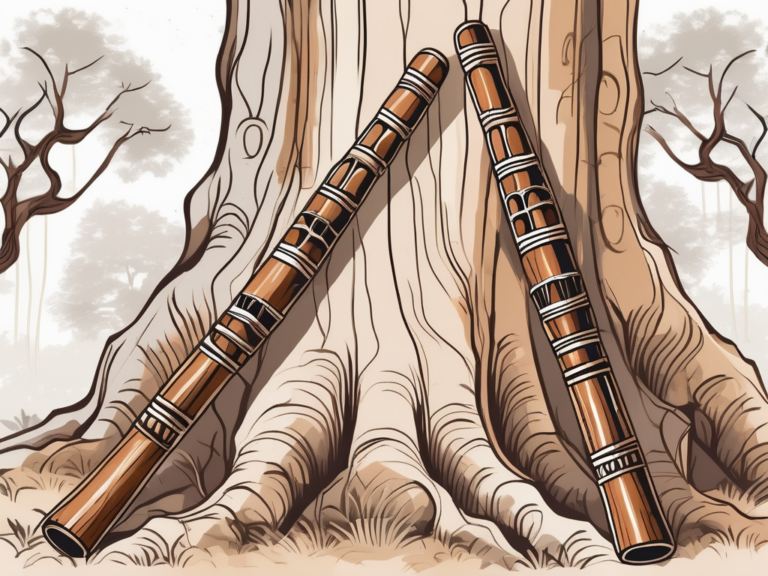Unlocking the Secret Power of the Vestibular Nerve
The vestibular nerve is a fascinating and powerful part of the human body that plays a crucial role in our perception of balance and spatial orientation. Understanding its anatomy, function, and the disorders associated with it can shed light on the incredible ways it influences our daily lives.
Understanding the Vestibular Nerve
The vestibular nerve, also known as the eighth cranial nerve or the auditory vestibular nerve, is a fascinating component of the human nervous system. This intricate nerve is responsible for relaying sensory information from the inner ear to the brain, playing a crucial role in our everyday activities. Its primary function is to provide us with a sense of equilibrium, maintaining our balance and coordinating our movements with precision.
Delving deeper into the complexities of the vestibular nerve reveals its remarkable anatomy and function, shedding light on the inner workings of our balance system.
Anatomy of the Vestibular Nerve
The vestibular nerve is composed of two main components: the superior vestibular nerve and the inferior vestibular nerve. These branches work in harmony to transmit signals from the semicircular canals and the otolith organs, which detect rotational movements and linear acceleration, respectively. The intricate network of these components allows for the seamless relay of sensory information crucial for maintaining balance and spatial orientation.
Furthermore, the vestibular nerve is intricately connected to the vestibular labyrinth, a complex system within the inner ear responsible for detecting motion and spatial orientation. This labyrinth includes the semicircular canals, which sense rotational movements, and the otolith organs, which detect linear acceleration. The vestibular nerve acts as the bridge between these sensory organs and the brain, ensuring swift and accurate transmission of vital information.
Function of the Vestibular Nerve
The vestibular nerve plays a vital role in processing and interpreting sensory information regarding our body’s position in space. It continuously communicates with other parts of the brain, such as the cerebellum and the brainstem, to maintain balance and coordinate movement. This intricate interplay between the vestibular nerve and various brain regions allows for precise coordination of movements and adjustments to ensure stability in various environments.
Moreover, the vestibular nerve is not only essential for balance but also contributes to other sensory functions, such as spatial orientation and perception of motion. Its intricate connections and functions highlight the remarkable complexity of the human nervous system and its ability to adapt and respond to a myriad of stimuli.
The Vestibular Nerve and Balance
Balance is a complex process involving multiple systems within the human body. The vestibular nerve significantly contributes to maintaining balance by providing the brain with essential information about head movement, acceleration, and the body’s orientation in relation to gravity.
The vestibular nerve is a crucial component of the vestibular system, which includes the semicircular canals and otolith organs in the inner ear. These structures work together to detect changes in head position and movement, sending signals to the brain to help us stay oriented and balanced.
Role in Spatial Orientation
Our ability to navigate through space, maintain an upright position, and adjust our movements relies heavily on the vestibular nerve. By integrating information from the eyes, muscles, and joints, the brain can accurately interpret the signals received from the vestibular nerve, allowing us to perceive and adjust to our surroundings.
Furthermore, the vestibular nerve plays a key role in our sense of spatial awareness. It helps us understand our position in relation to the environment around us, enabling us to move with precision and avoid obstacles in our path.
Impact on Motor Control
The vestibular nerve is closely linked to motor control, influencing our ability to coordinate movements and maintain stability. Any disruption in the function of the vestibular nerve can result in difficulties with walking, standing, and performing precise tasks.
In addition to its role in motor control, the vestibular nerve also contributes to our sense of equilibrium. It helps us adjust our posture and muscle tone to stay balanced, whether we are sitting, standing, or in motion.
Disorders Related to the Vestibular Nerve
While the vestibular nerve is an intricate and remarkable structure, it is not exempt from potential disorders that can have a significant impact on an individual’s quality of life.
The vestibular nerve, also known as the eighth cranial nerve, plays a crucial role in transmitting sensory information from the inner ear to the brainstem. This information helps maintain balance, spatial orientation, and eye movements. Any disruption or damage to this nerve can result in a range of debilitating vestibular disorders.
Symptoms of Vestibular Disorders
Vestibular disorders can manifest through a variety of symptoms, including dizziness, vertigo, imbalance, nausea, and difficulty concentrating. These symptoms can have profound effects on an individual’s physical and emotional well-being, often leading to decreased mobility and increased risk of falls.
In addition to the physical symptoms, vestibular disorders can also impact a person’s mental health, causing anxiety, depression, and social isolation. The constant fear of experiencing vertigo or losing balance in public settings can significantly affect an individual’s confidence and overall quality of life.
Common Vestibular Disorders
There are various vestibular disorders that can arise from dysfunction within the vestibular nerve or other related structures. Some of the most common disorders include benign paroxysmal positional vertigo (BPPV), Ménière’s disease, and vestibular migraines. Each condition has distinct characteristics and may require different management approaches.
Benign paroxysmal positional vertigo (BPPV) is characterized by brief episodes of vertigo triggered by specific head movements. Ménière’s disease, on the other hand, is a chronic condition that involves recurring episodes of vertigo, hearing loss, tinnitus, and a sensation of fullness in the ear. Vestibular migraines are a type of migraine headache that includes vestibular symptoms such as vertigo, dizziness, and imbalance.
The Vestibular Nerve and the Brain
The connection between the vestibular nerve and the brain is intricate and multifaceted, with both neurological and cognitive implications.
The vestibular nerve, also known as the eighth cranial nerve, plays a crucial role in transmitting sensory information about head position and movement to the brain. This information is essential for maintaining balance, coordinating eye movements, and stabilizing the body during various activities.
Neurological Connections
The vestibular nerve has extensive connections within the central nervous system, integrating with various brain regions responsible for sensory processing, motor control, and emotional regulation. This interplay allows for the complex coordination required to maintain balance and adapt to changes in the environment.
Furthermore, the vestibular system interacts closely with the visual and proprioceptive systems to provide a comprehensive understanding of spatial orientation and movement. This integration occurs in brain areas such as the cerebellum, brainstem, and cerebral cortex, highlighting the intricate network of connections involved in processing vestibular information.
Cognitive Effects of Vestibular Dysfunction
Beyond its role in balance, emerging evidence suggests that vestibular dysfunction can impact cognitive functions such as attention, memory, and spatial awareness. Understanding these cognitive effects is critical for identifying and managing the challenges faced by individuals with vestibular disorders.
Research has shown that disruptions in vestibular function can lead to difficulties in spatial navigation, spatial memory, and attentional control. These cognitive effects may manifest as disorientation, dizziness, and difficulties in concentrating on tasks that require spatial processing. By exploring the cognitive consequences of vestibular dysfunction, researchers aim to develop targeted interventions to improve cognitive outcomes in individuals with vestibular disorders.
Harnessing the Power of the Vestibular Nerve
Advancements in research and therapeutic approaches offer hope for individuals struggling with vestibular dysfunction. By targeting the underlying causes and working towards enhancing compensatory mechanisms, the power of the vestibular nerve can be harnessed to improve the lives of those affected.
The vestibular nerve, also known as the eighth cranial nerve, is a remarkable and intricate part of the human body. It plays a pivotal role in maintaining balance, coordinating movements, and perceiving spatial orientation. This nerve is responsible for transmitting sensory information from the inner ear to the brain, allowing us to navigate the world around us with ease.
Therapeutic Approaches
Effective treatment options for individuals with vestibular disorders include vestibular rehabilitation therapy, medication management, and lifestyle modifications. Vestibular rehabilitation therapy, in particular, focuses on exercises and strategies designed to optimize balance, reduce symptoms, and improve overall functioning.
During vestibular rehabilitation therapy, individuals work closely with trained therapists who guide them through a series of exercises tailored to their specific needs. These exercises may include head movements, eye exercises, and balance training. By gradually challenging the vestibular system, individuals can regain their sense of balance and reduce symptoms such as dizziness and vertigo.
Future Research Directions
As our understanding of the vestibular nerve and its interaction with the brain deepens, promising avenues for future research emerge. Exploring the therapeutic potential of neuromodulation techniques, such as transcranial magnetic stimulation, holds great promise. This non-invasive technique involves applying magnetic fields to specific areas of the brain to modulate neural activity, potentially offering a new approach to treating vestibular disorders.
Furthermore, researchers are also investigating the intricate connections between the vestibular system and cognitive processes. Recent studies have shown that the vestibular system not only influences balance and spatial orientation but also plays a role in cognitive functions such as attention and memory. Understanding these connections could lead to innovative treatment strategies that target both the physical and cognitive aspects of vestibular dysfunction.
In conclusion, the vestibular nerve is a remarkable and intricate part of the human body that plays a pivotal role in maintaining balance, coordinating movements, and perceiving spatial orientation. While disorders affecting the vestibular nerve can have a profound impact on individuals, advancements in research and treatment offer hope for improved quality of life. Understanding and harnessing the power of the vestibular nerve opens up possibilities for further unlocking its secrets and helping individuals overcome the challenges posed by vestibular dysfunction.





